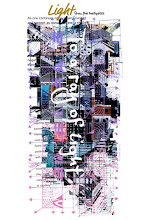The local government is also working on the welfare of the physically challenged. Multi-purpose facilities are designed with flat floors, gentle slopes, and wide corridors and doors to accommodate the width of wheelchairs. Each information board will be marked with Braille for the visually impaired, and voice recognition technology will be used to automatically convert audio into subtitles and display them on the screen. All welfare equipment, such as electric wheelchairs, will be manufactured and provided by the local government using 3D printers. The local government will also arrange for assistance dogs for the physically challenged, and provide sign language education.
The interior of the houses will be designed to be comfortable for families with physically disabled people. In general, however, barrier-free buildings that remove physical barriers within the building tend to be considered good, but it has also been shown that this makes the disabled and the elderly more vulnerable. Since there are always obstacles throughout society and in nature, it is better to dare to leave obstacles behind, which in the long run leads to an increase in the scope of one's own activities. This degree of barrier-free will ultimately be a matter of balance in terms of where and how many obstacles are left, so this will be a matter of the family deciding the amount of obstacles in their residence. Multipurpose facilities are used by everyone, so obstacles should be removed.
In Japan, where the birthrate is declining and the population is aging, 4.6 million elderly people with dementia have been identified as of 2014, and another 4 million are believed to be on the reserve list. In a monetary society, some families are forced to care for the elderly at home due to financial problems and the availability of places to accept them. At Prout Village, one of the first things to be said about this problem is that all residents have free time and can afford to take care of themselves. In addition, the municipality has set up a special residence in the municipality for residents diagnosed with dementia to live together. There will be a fence-like boundary made of plants and trees in the yard, and the residents will be able to move freely within the boundary. Therefore, there should be no ponds or other dangerous objects on the premises. They are free to go out of their private residence as long as they are accompanied by family or friends, and they can come and go as they please. It is also possible to stay at home with family during the day and leave them at the private residence at night.
The floor and walls of the private residence should be easy to wipe clean, as they may need to defecate in places other than the toilet. The floor and walls should be easy to wipe clean, and knives and other dangerous tools should not be left there. Since the facility is not located in a distant place, but in the same municipality, the family can see each other at any time, as if they have moved to the same neighborhood. This private residence will be managed by the medical and food department of the local government, and the family and residents will take care of the patient.
A possible addition to this is a local government system in which children and other adults take turns taking care of residents with dementia. Everyone ages and may eventually develop dementia, and it is a social study for children to experience their own future. It is a place for children to learn how to be healthy, how to eat well, how to be considerate of others, and how to think humbly.
In addition, welfare includes sexual care for the physically challenged, although this is not something that is generally familiar in Japan. Even people with serious disabilities have sexual needs, and sex volunteers go to their homes to help them relieve them. This kind of thing is also considered part of welfare.





0 コメント